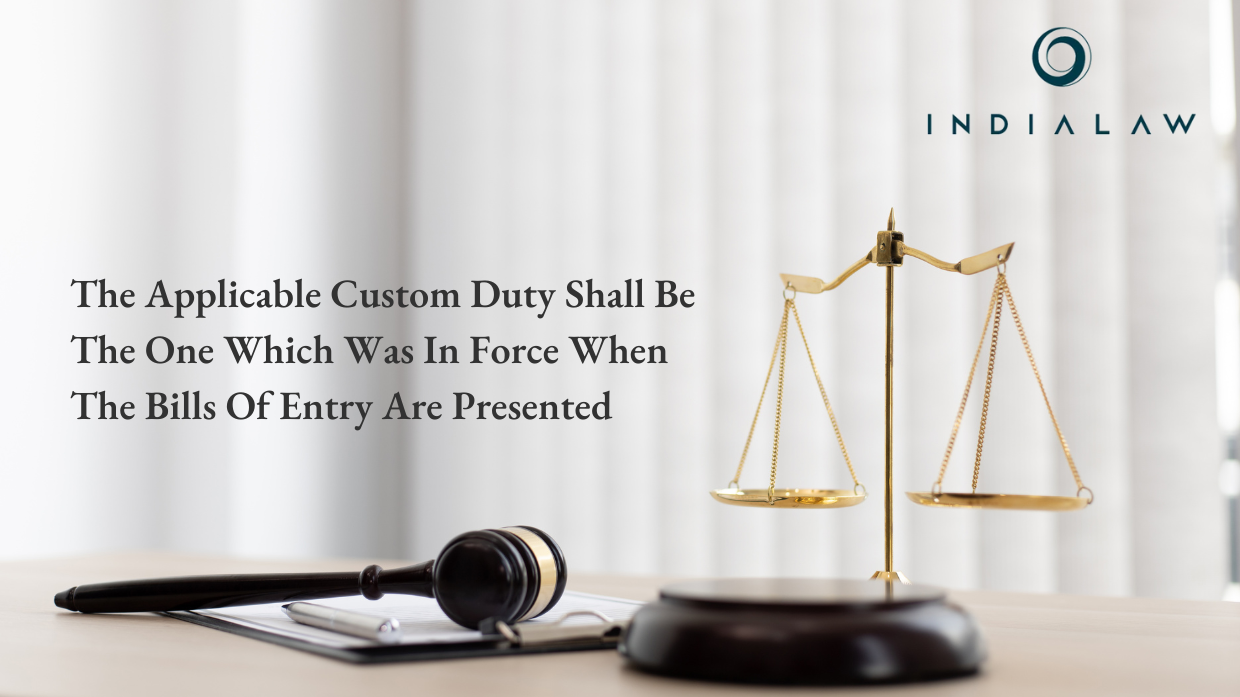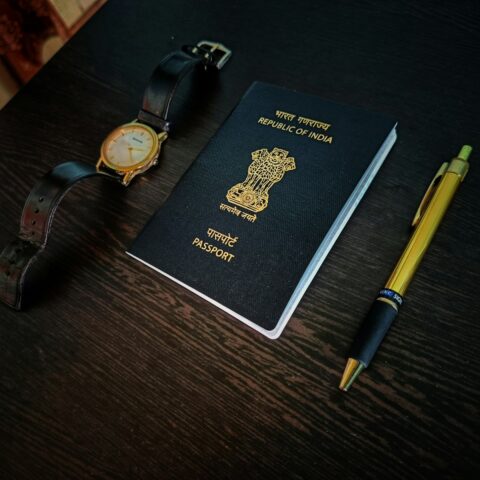The Applicable Custom Duty Shall Be The One Which Was In Force When The Bills Of Entry Are Presented

In a recent ruling, a Division Bench of the Hon’ble Bombay High Court comprising of Hon’ble Justice K.R. Shriram and Justice Jitendra Jain clarified a crucial aspect of customs law, specifically the time when the applicable customs duty rate is determined. The case[i] involved Patanjali Foods Ltd., a major Indian company, and revolved around the question of whether the customs duty rate should be fixed at the time the bills of entry are presented or if it can be modified based on notifications issued after the bills are filed.
Table of Contents
Facts
The Petition concerns Patanjali Foods Ltd., (‘Petitioner Company’) which had entered into contracts to import 12,250 metric tonnes of Crude Palm Oil of Edible Grade from Just Oil & Grain Pvt. Ltd., a company based in Singapore. However, the actual quantity delivered was slightly less, at 12,127.577 metric tonnes, covered by three invoices dated April 26, 2021. To facilitate the import process, Petitioner Company filed a Warehouse Bill of Entry on May 7, 2021, for the entire quantity. Subsequently, the company filed four Ex-Bond Bills of Entry on May 13, 2021, to clear a specific portion of 3,465.024 metric tonnes for home consumption.
As per Notification No. 47/2021-Customs (N.T.), e-Gazetted and digitally signed on May 13, 2021 at 21:24:11 hours (“said notification”), the tariff value of the said goods was increased from USD 1163 PMT to USD 1219 PMT (“revised tariff value”).The dispute arose when on account of the said Notification, the department sought to reassess the 4 Ex-Bond Bills of Entry and demanded duty on the enhanced tariff value of USD 1219 PMT. This notification was issued after Patanjali Foods had already presented their bills of entry. The customs department, based on this notification, sought to reassess the duty, resulting in an additional duty demand of Rs. 6,169,890. Patanjali Foods paid this amount under protest, leading to the legal dispute.
Issue
- Can the Petitioner Company file a writ petition when alternate remedy of appeal to the reassessment is available to them?
- At what point does a notification altering customs duty rates become effective and which rate should apply to the goods in question?
Contentions Of The Parties
The Ld. Counsel for the Petitioner Company argued that according to the precedent set by the Supreme Court in the case of Union of India v. G.S. Chatha Rice Mills[ii], the applicable duty rate should be the one in effect at the time the bills of entry are presented. In this case, since the bills were submitted before the revised rate notification was published, the duty should be assessed based on the original rate of USD 1,163 per metric tonne.
The Ld. Counsel for the Respondent countered that the writ petition is not valid since the Petitioner Company has not exhausted all the other remedies available to them, i.e., appeal to reassess the duty. Moreover, the Petitioner Company did not file a refund application, which they were supposed to file as per Section 27 of the Customs Act.
Observations Of The Court
Issue 1: On the Validity of the Writ Petition
The Bench observed that Section 17(5) of the Customs Act requires a ‘speaking order’ to be issued when a reassessment contradicts an original self-assessment. This means that the customs officials must clearly state the reasons for any reassessment and how it differs from the initial assessment. In this case, since no such speaking order was provided, the Bench found that the Petitioner lacked the foundation necessary to file an appeal. Therefore, the Court rejected the argument that Patanjali Foods should have pursued other legal remedies before filing the writ petition.
Issue 2: On the Applicable Duty Rate
The Bench noted that the customs officials applied their authority of reassessment based on the said notification increasing the rate of duty to the revised tariff value. Further the self-assessment was conducted based on the rate of duty that prevailed at the time of presenting the bill of entry. The court relying and reiterating the accepted legal principle in G.S. Chatha Rice Mills Case (Supra), decided that USD 1163 PMT would be the rate of duty applicable, which was in use when the 4 Ex-Bond Bills of Entry were presented.
Conclusion
The Bench quashed the reassessment carried out by the customs officials and ruled that the notification and revised tariff value would not apply in this case. It further directed that Patanjali Foods Ltd. could submit a refund application, which the authorities must process within twelve weeks of its submission. Additionally, the court mandated that the petitioner be given a personal hearing before any decision is made, with at least seven working days’ notice.
In the author’s opinion, the court’s ruling to base the duty rate on the time the bill of entry is presented is reasonable, as it provides importers with clarity and predictability. This approach helps prevent future uncertainty and disputes if duty rates change after goods have been offered for clearance. Although it might seem burdensome to require a separate application for refunds instead of issuing the interest to them immediately, this procedure likely ensures that refunds are handled accurately and in accordance with established norms.
[i] Patanjali Foods Ltd. v. Union of India, 2024 SCC OnLine Bom 2033
[ii] 2020 SCC OnLine SC 770
By entering the email address you agree to our Privacy Policy.



